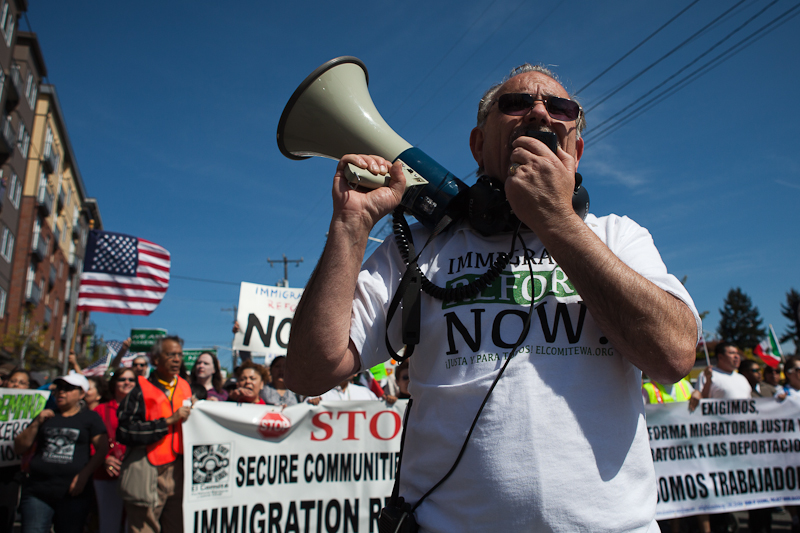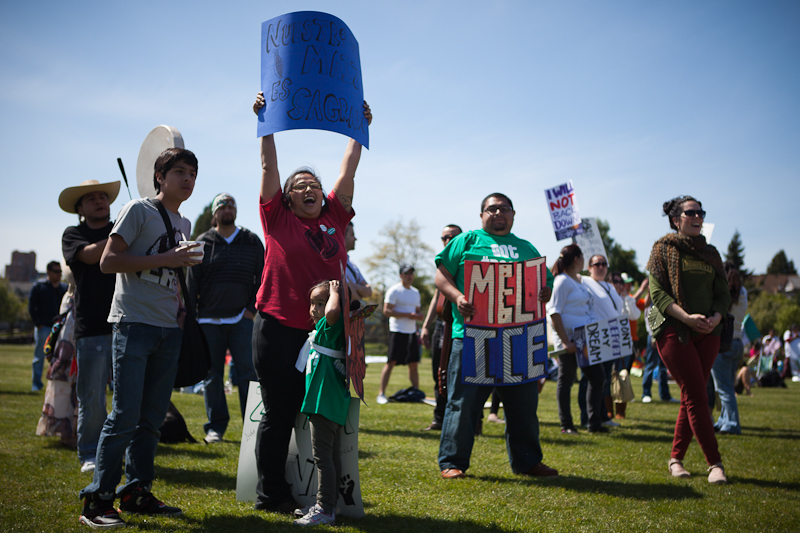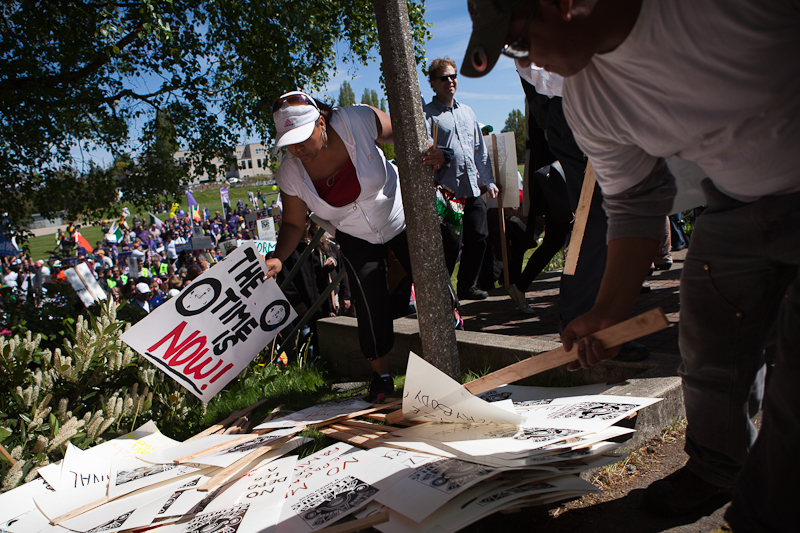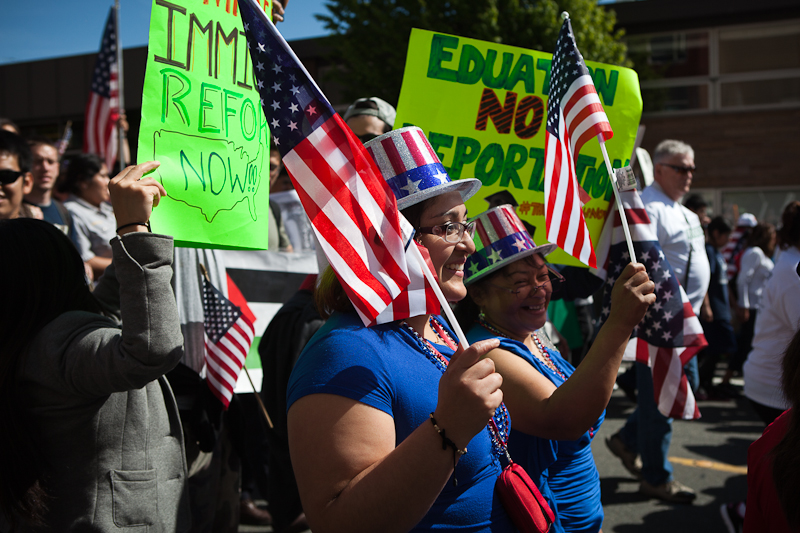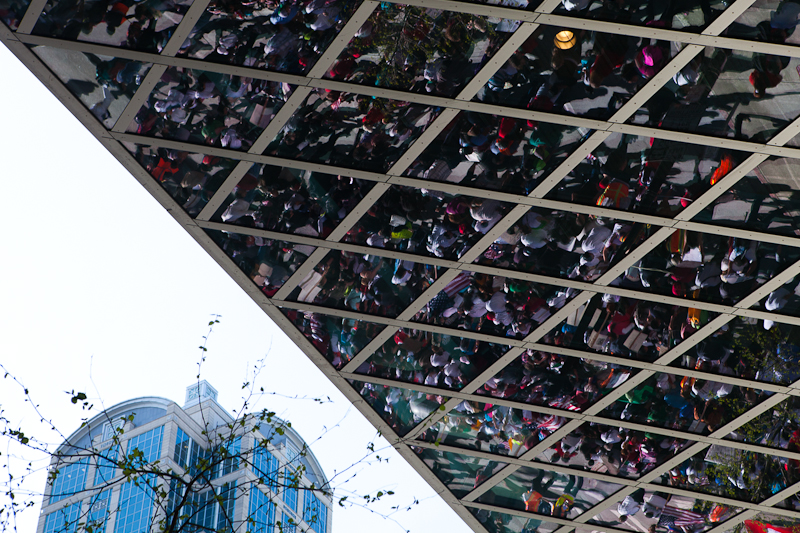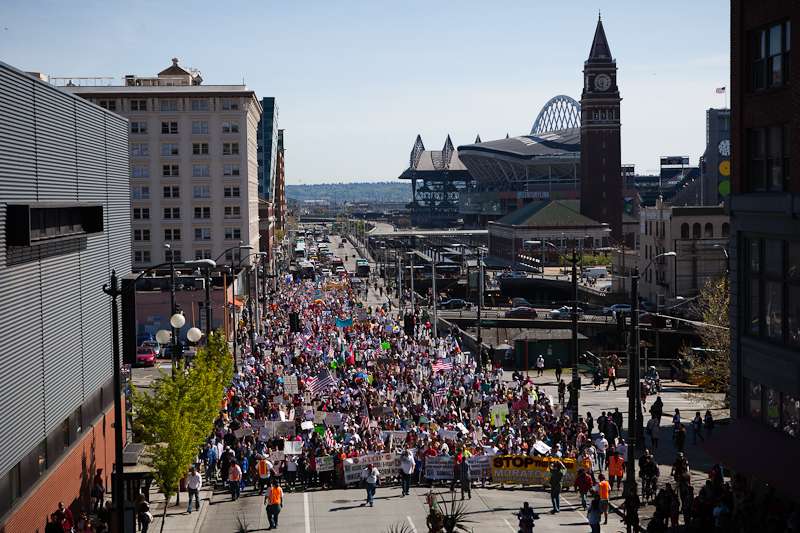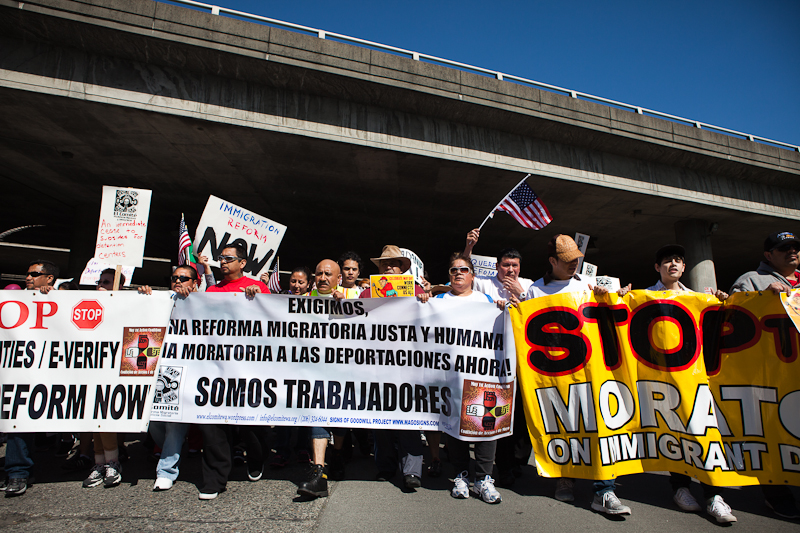 On the eve of big May Day protests that stayed (mostly) peaceful, The Globalist interviewed organizer Jorge Quiroga about the proposed immigration reform bill and the state of activism today.
On the eve of big May Day protests that stayed (mostly) peaceful, The Globalist interviewed organizer Jorge Quiroga about the proposed immigration reform bill and the state of activism today.
It was nearly 35 years ago but Jorge Quiroga clearly remembers pushing open the door of his basement room in Seattle to see snow for the first time in his life. But he wasn’t in a frame of mind to enjoy it.
Quiroga had just immigrated to the United States from Argentina, after being imprisoned for three and a half years without a charge. A law in Argentina’s constitution allowed prisoners without a formal sentence to seek residence in other countries and after sending out applications to 40 nations, Quiroga was finally admitted to the U.S. as a political refugee.
Today, Quiroga serves as President of Washington’s El Comité social justice organization. Along with various programs and community events, the group is responsible for organizing Seattle’s annual May Day immigration reform march, which typically attracts the largest, most focused crowd among the myriad of protests going on in the city.
On the eve of the big day, The Seattle Globalist sat down with Quiroga in El Comité’s Central District office to talk about the May Day tradition, social activism and the proposed immigration reform bill making the rounds in the other Washington.
Where are you from? When did you move to Seattle?
I am a political refugee from Argentina. I came in 1979.
Were you involved in activism from the get go once you moved to Seattle?
No, not really. I came pretty beat up [laughs]. I did need some time to adjust—I mean I lost my family, all my friends killed or disappeared. I have two daughters who ended up with my mom. I mean your life gets destroyed and sent somewhere else where you don’t speak the language or understand the culture or anything and you have to restart your life. And that took some time to digest.
I’ll never forget, when I came it was November and I remember pretty clearly then that I thought “I’m all by myself.” The St. Paul’s church in Rainier Beach were my sponsors and the community there took me to a party—there were probably 100 people at the party—but nobody spoke Spanish. I thought “Well, at least in jail I was talking with the guy across the door.” [laughs].
But, yeah, I think it was right around ’94 I restarted my involvement in politics. The community and St. Mary’s was a huge support in that sense. They helped me to come back again.
Well, tomorrow is the big day. There will be many different people protesting against many different issues. What is El Comité’s message? What message do you want to get out to the public?
It’s a good thing—the diversity of May Day—because May Day is about workers. That’s what we’re trying to reinvigorate in the United States. Pretty much I think it is to recoup what is the American tradition of labor day and the origins of that fight for the labor movement.
It’s so sad in the United States—it’s the only country that doesn’t [have a strong May Day tradition]. That’s why for us it was very important to setup the May Day Protest to say that we’re not “undocumented”, we’re not “criminals”, we are workers. May Day was going to be the best expression of that.
A lot of groups have used the May Day to introduce their issues and we don’t have any problem with that as long as they understand that we march for immigration reform. As long as they go along with that and understand and support our struggle, then we support them—we’re all brothers and sisters.
It’s quite an interesting time for immigration with the new bill proposal. What are you thoughts on it? Do you feel like it is a step in the right direction? Are there things you think could be improved?
Well, there can be improvements that’s for sure. But yes, it’s a good step in direction— just to be able to be talking about that in Congress. That’s a step in the right direction.
Some other stuff in there are not that good for the community. But that’s the reason May Day is there to support immigration reform. And questioning the deportation system; how can we negotiate when you keep deporting people? It doesn’t seem like you’re serious about legalizing because you keep deporting them.
We are also going to keep talking about E-Verify. The E-Verify they want to implement countrywide I don’t think is good for anybody, and specifically for Native Americans and African Americans where a lot of them don’t even have a birth certificate. It will be a struggle for them to supply the documents.
Those are the issues I think are important and the concept of the family reunification that they want to change for a merit value visa.
You mean the shift to a more skills-based system for evaluating visa applications?
Yes, a skills-based system. And that is a huge change because I cannot apply for my brother anymore. That is a diminishment of your right as a U.S. citizen to be able to bring your brother or whoever that wants to come here. That, we don’t support. But at least now the conversation is there.
The Comité in the beginning tried to talk about framework they used for the immigration reform package which we consider not the right framework. What you see is they begin with the belief that you are a criminal. That concept is completely wrong because what the undocumented worker has done is break an administrative law, not a criminal law. An administrative law could be like if you build an addition in your house and you do it without a permit; you’ll have to bring it down or pay a fine—they don’t put you in jail though. It’s pretty much the same thing if you come undocumented to this country.
With immigration they have failed terribly—they have 12 million undocumented people and they failed to do this administrative work to properly move people through the border and because of their incapacity as legislators to provide some framework for immigrants to come to work in this country, they’ve decided to just treat them as criminals. Then we have police and jails and everybody else to deal with them.
They’ve talked about a new framework for a 13 year path to citizenship.
It’s terrible, you have people that have been here for 25 years and now you’re telling them they have to wait another 10 years and then they can apply for residency. And then, only after that can they apply for citizenship.
It is nonsense to have this waiting period. It comes back to the framework that they are criminals. A lot of people aren’t going to qualify and then what will happen to them?
I was just going to ask you, you know this is a national issue, but are there any issues your working on that are more specific to the Northwest? Any issues that are more prevalent in the Northwest than other areas?
It’s pretty much the same issues. The only difference is that it’s a border state. And now they are more concerned with militarization of the borders.
That was part of the bill also—beefing up security.
What that is doing to us is increasing terribly the amount of people who are dying on the border. It is skyrocketing in the past three, four, five years the number of people dying. If we had that issue with dogs or any other kind of animal people would be up in arms. They would say “how can we be so inhumane to allow that to happen?” But here we have thousands of people dying terrible deaths on the border with their skin dried out from the sun.
So added security will just continue to increase that problem?
Yes, more dead people on the border. That is what this does and they know it. They know. The government knows that and they think it will make people aware not to do it.
Were you in Seattle for the big protests in 2006 (in response to H.R. 4437)?
Oh yeah.
People talk these days about how everyone is so glued to their phones all the time that they don’t get out as much to protest. Have you seen a change in just the 6 or 7 years since 2006?
Oh yes. 2006 was something extraordinary. Every year we have a worker’s assembly before the May Day march and that worker’s assembly in 2006 was in Holy Family in their hall. That assembly there we usually got about 100 or 150 people coming to the assembly but about 600 people showed up then.
And right on the spot we decided to do a rally to South Park coming down from White Center and when we ended up there there were about 5 or 6 thousand people marching with us. On the street people were coming and joining and it was unbelievable and that was in March.
Then we decided April 10th to do a march because there was legislation passed to try and make anybody who helped an undocumented person a criminal. A lot of people were pretty upset about that and we ended up with about 40,000 people marching to the Federal Building.
Then we decided to go ahead with May Day. We organized that and there was a lot of media involved in that time because they were surprised about what had happened in April and they came and said “Jorge, who is going to come on May Day? You already had 50,000 in April.” And I said, “Well, I think there will be a lot of people.” They said “How do you know that?” I said, “I was at a street car eating a taco on Rainier Avenue close to the Starbucks and a girl came walking up to me and gave me a flyer inviting me to the march on May Day. I said ‘Where did you get that?’. And she said ‘Oh well somebody gave a flyer to my mom and dad and they made copies’. I said ‘Oh my god’” [laughs].
This year I don’t see the same vibe I was able to see at that time. The police department said they are expecting 20,000 or 30,000 people and I think they are more hopeful than I am! [laughs]. I don’t know, I have a lot of mixed feelings.
The TV stations are always bringing up the issue with some brothers and sisters that made a big mess on May Day last year and they always put it on the same line up. You see the news and how they report it and they always put it together.
You said that back in 2006 people were printing out flyers and sort of taking it into their own hands. Has technology made it so people feel like they don’t need to do that anymore?
Yes, exactly. They think that now if they put it on Facebook or send some emails that it’s done. The problem is that most of the people on the Facebook pages and emails are already activists.
You have to go visit the church, you have to visit the community centers, you have to visit the neighborhoods and we keep trying to do that. We printed quite a few flyers and we’ve been distributing them but that’s certainly an issue. We’ll see how that affects us this year.
It’s interesting how that can change things—the technology. Have you heard the term “slacktivism”?
Yeah, now people just put it on the internet and click a button and that’s it, your job is done. But that’s not true. It’s a lot of you talking with the people and them being interested before they’ll go and push for immigration reform.
We need to push to get the legislation done in Congress now. If we don’t get it done in the next two or three months, then forget about it because then it’s election time again. By then Congress will have started working on their election campaigns.
How do you judge a protest’s success? Can you? Do you look for what kind of media attention it got or what sort of political change it might have brought about or total attendance? Is there anything specifically you look at to say “that was a success, or, that was not”?
A success in our case in this time is to be able to move the largest amount of the people possible.
We have an issue: The community has been afraid the past year or two. The economical depression that has effected the country—you can imagine how much the undocumented workers suffer through that. That is why if we get 10,000 people on the street, this march will be a great success.
That’s pretty much what I estimate—that we’ll have at least 10,000 people. I think towards the end of the day people get more courage, they see that others are getting out. The other thing though is that it’s a work day, it’s on a Wednesday, and it’s very difficult to get permission not to work and to come at 1 o’clock.
Thanks for your time, Jorge, I’ll be there tomorrow so I’ll see you then.
Well then it will be 10,001 I guess! [laughs]. Thank you.
This interview has been edited for clarity and length.


